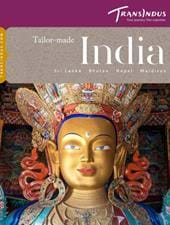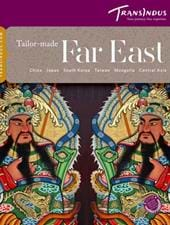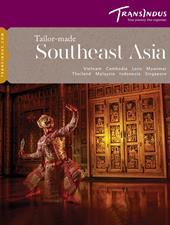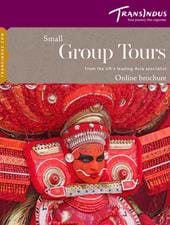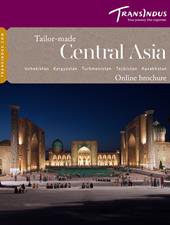Frequently Asked Questions:
Do I need a visa?
Yes, you do. In fact Sri Lanka has recently transitioned from the ETA system to the new eVisa scheme. All visitors must now complete an eVisa application and pay appropriate charges prior to their arrival in the country whether entering by air or sea, even if just transiting.
How to Apply:
- Visit the official website of Sri Lanka eVisa at https://www.srilankaevisa.lk
- Create an account or log in if you already have one.
- Fill out the online application form with accurate details.
- Upload the required documents, including a scanned copy of your passport, a recent photograph, and any additional documents specified for your eVisa category.
- Pay the eVisa fee securely online using the available payment options.
- Once your application is submitted and payment is confirmed, you will receive an acknowledgment receipt and a unique application reference number.
- Track the status of your eVisa application online using your reference number.
- Upon approval, download and print your eVisa to present to the Immigration officer at the port of entry in Sri Lanka.
eVisa Fees:
Although eVisa fees vary depending on the type of visa selected, however, most tourists apply for a Tourist Visa - Single Entry for 30 days, which costs US Dollars 50. Other options are given on the official website.
Documents to be carried, when arriving in Sri Lanka:
- A printed copy of your eVisa approval letter issued by the Sri Lanka Department of Immigration and Emigration.
- Your passport with at least six months validity from the date of entry into Sri Lanka.
Nationalities other than British, European countries and USA may be required to carry additional documents. You will be advised at the time of your application.
How long is the flight?
If you fly direct with Sri Lankan Airways you’ll reach Colombo in a little under 11hrs. Flying indirect via one of the Gulf hubs typically takes two or three hours longer. Most flights from London Heathrow travel overnight.
Is there a time difference?
Yes. Sri Lanka is 5.5hrs head of GMT.
How will I get around the country on a TransIndus tour?
Tailor-made travellers will have a dedicated luxury vehicle at their disposal. We only use new, or nearly new saloon cars or comfortable mini-vans, all fully air-conditioned and expertly driven by experienced chauffeurs.
What are the roads like?
Road conditions are generally good in the south and centre of the island. Major trunk roads between towns and cities, and along the coast, are well maintained, though as you venture north and out to more remote national parks things deteriorate rapidly.
What about guides?
A chauffeur-guide will accompany you for the duration of your trip, helping you to interpret what you experience, translate for you, decipher menus and fill in the historical context.
We only use the most experienced, English-speaking guides.
Will I need to tip?
Tipping isn’t the norm in hotels, cafés or restaurants, but if you have appreciated the services of your chauffeur-guide, a tip is the best way to express your appreciation.
Is there internet access?
In major towns and cities you’ll be able to get online via your hotel’s WiFi. Elsewhere, coverage is slow.
Will I be able to use my mobile?
Yes. Coverage is good in all but the most remote national parks. Your regular charger will work, but you’ll need to bring an adapter. Consult your service provider for details of cost.
Will I need any special clothing?
Dress for the heat and strong, bright sunlight. Bring an umbrella or light raincoat in case of rain.
What is the food like?
If you’re a lover of spicy curries you’ll be spoiled for choice in Sri Lanka. The local cuisine offers a punchy array of flavours, dominated by sweet caramelized ‘seeni sambal’ (onion relishes), bitter melon and lime, freshly scraped coconut, and chillies tempered by rice. Samosas and dhal (lentil curry) resemble the ones you find back home or in India, but have a definite Sri Lankan twist, reflecting the foreign influences to which the island has long been exposed. For less adventurous palettes, all of the hotels we use offer milder, Western cuisine as well as local dishes.

I’m a vegetarian. Will I find anything to eat on restaurant menus?
Absolutely. The staples of Sri Lankan cooking are rice, coconut, and local fruits and vegetables: carrots, potatoes, aubergine and pumpkin are ubiquitous, along with less familiar veggies such as drumstick plant, jackfruit and bitter gourd. All can end up in curries and stews, with onions, peppers, and often tomatoes, or fried and mixed with shallot, green chili, and lime juice. Look out for ‘mallum’, made from shredded greens and fresh coconut – delicious and healthy!

Are Sri Lankan people happy to be photographed?
Like anywhere else, you should always ask permission before photographing people, and as a rule, it will be granted with a smile and regarded as a compliment. Younger people react very positively and may well approach you requesting selfies. More senior locals, however, sometimes feel self-conscious and may refuse.

What is the currency and how do you change money?
Sri Lanka’s currency is the rupee. You can change cash and travellers cheques at most hotels, and ATMs are plentiful.
Will I be able to use my debit or credit card?
Yes, though you should check terms, conditions and charges with your bank before leaving as these vary greatly.
Is Sri Lanka a safe country to travel in?
Yes, extremely safe. It is rare for any foreigners to be the victim of crime.
Useful Link
For further information please refer to https://www.gov.uk/foreign-travel-advice/sri-lanka
